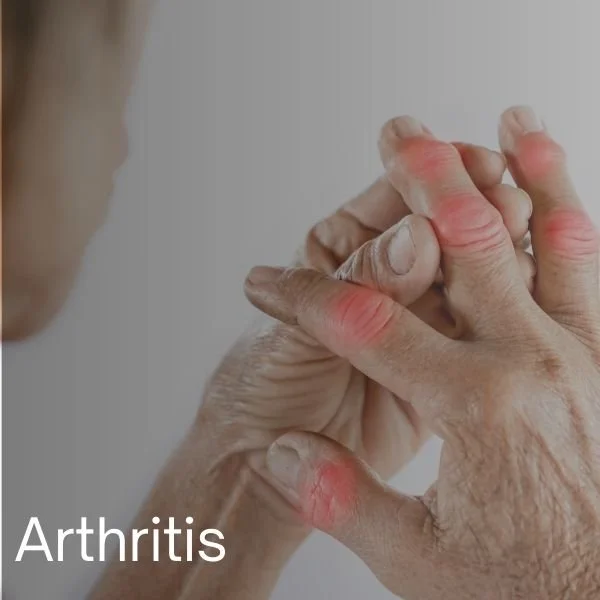
Relieve chronic pain today
A toolkit in your pocket to help you relieve chronic pain, thanks to clinically-backed neuroscience.
Reveri is rooted in 45+ years of clinical research, pioneered by Dr David Spiegel.
Clinically backed
77% of members felt less pain after one 10-minute interactive session
Immediately effective
Personalized to you
Our sessions are tailored, and personalized to your goals.
As seen in
Relieve your chronic pain with hypnosis
Whether it’s an acute headache or chronic pain, we are confident hypnosis can help you.
77% of our members felt less pain after one 10-minute interactive session
with our science-backed digital program. Read more
David Spiegel, M.D.
Associate Chair of Psychiatry
4.6/5 (5,000+ reviews)
Thousands are learning the power of personalized hypnotherapy
Hypnosis for Chronic Pain Relief
Hypnosis is a sustainable and effective natural approach that is proven to provide pain relief immediately, but is also safe for long-term use. By helping the brain change how you feel, studies show that hypnosis can reduce the amount of pain subjects feel by 30-42%. Using our Reveri hypnosis app members can access personalized sessions on their own time, with 77% of members reporting less pain after one 10-minute interactive session.
In addition to its proven effectiveness, hypnosis can also help with anxiety, stress, depression, sleep problems or insomnia, and more - which are often associated with pain. Hypnosis is one of the best drug-free comprehensive pain management approaches to unlock the relief you are seeking.

Start your pain free life today
Well done for making it here - that’s a big first step. Hypnosis is rooted in decades of clinical research. See if it can change your life today.
Self-hypnosis App for Pain: Pain Management Hypnotherapy
Diagnosis or not, hypnosis can help individuals achieve pain relief. Chronic (lasting longer than 3-6 months) and acute (short-lived) conditions, such as the following, can benefit from hypnosis for pain management.
FAQ
-
Clinically-backed neuroscience has made it possible for hypnosis to help you find relief naturally from chronic pain. In search of a holistic way to find relief, self-hypnosis is the answer for many. With a personalized tool kit in your pocket, you can undergo hypnotherapy sessions on your own time, in your own space. The flexibility alone can contribute to the effectiveness of hypnosis therapy. In just one 10-minute interactive Reveri session, 77% of our members reported feeling less pain. With greater control over your mind, you can ease pain and enhance well-being.
-
Among the many benefits of hypnosis is the ability to improve your total mind-body connection and overall well-being. Those suffering from chronic pain can invest time and energy into a therapy that not only works to provide pain relief but promotes better sleep, mental clarity, emotional control, and more. As a sustainable and effective long-term therapy for chronic pain relief, self-hypnosis provides users with the flexibility to receive personalized sessions on their own schedule.
-
Hypnotherapy is a natural therapy that’s highly effective for providing pain relief. With the Reveri app, members can access a personalized self-hypnosis tool kit in their pocket at all times. In just one 10-minute interactive Reveri session, 77% of our members reported feeling less pain. From an acute headache to chronic pain, find relief with the Reveri app. Pain is often triggered by associations and can be worsened by stress, lack of sleep, and other influences. During personalized hypnotherapy sessions, members enter a highly focused state where we can tap into the subconscious mind to break deeply rooted associations and habits while creating more awareness. Hypnosis is one of the few natural therapies that can provide pain relief in combination with other benefits that can maximize relief such as less stress, better sleep, and more.
-
Hypnosis can naturally reduce inflammation as suggested by research. Preliminary evidence found that hypnosis was associated with gene expressions related to reduced inflammation and cellular stress and supporting healthy immune responses and stem cell growth.
-
With more than 100,000 drug overdoses per year in the United States, and two-thirds caused by opioids, natural pain relief is in high demand. In addition to the data to prove the effectiveness of hypnosis, it’s also safer than most pharmacological treatments for pain. With hypnosis for pain management individuals can reduce the need for medication and time-consuming doctor’s visits while experiencing more benefits than just pain relief.
Our hypnosis app includes guided self-hypnosis sessions. Each session is personalized and designed to mimic the experience of a 1:1 in-person hypnotherapy session with Dr. Spiegel. Dr. Spiegel often says, the strain in pain lies mainly in the brain, so the suggestions during hypnosis sessions target processes that are managed by specific brain networks. As hypnosis works to help the brain change how you feel, hypnosis can lead to a higher success rate while decreasing anxiety levels. In summary, hypnosis is safer, saves time, and is often more effective than standard care for pain relief.
-
Self-hypnosis offers individuals the flexibility to have hypnotherapy sessions on their own time. Using programs or apps like Reveri individuals can access self-hypnosis sessions and tools in their pocket 24/7. During personalized self-hypnosis sessions, individuals enter a highly focused state wherein they train their mind to enhance control over their body. The brain is connected to every organ; it is the master regulator of the body.
Research: Understanding Hypnosis and
Its Effects on Pain
Can hypnosis help with pain relief?
Let’s begin with the conclusion: hypnosis is scientifically proven to be one of the best drug-free ways to reduce pain. [1] Importantly, hypnosis reduces many different types of clinical pain that people deal with in their lives, both acute and chronic. [2] But before we explain how hypnosis is so effective for reducing pain, let’s review what pain is and how the brain manages painful experiences.
-
Pain is a universal form of suffering. While most of us will have to deal with acute (or sharp) pain at different points in our lives (e.g., injury, surgery), some may face chronic pain for medical and other reasons. Pain is sensed mainly through bare nerve endings; thicker nerve cells send information about pain from an acute injury (like getting a cut), while thinner ones communicate dull pain (like after surgery or long-lasting tissue damage) and temperature. Pain information is sent to different places in the brain. One of these routes sends information to the thalamus (often described as the brain’s “relay station”) and then to the somatosensory cortex (the part of the brain that processes physical sensory information including touch).
Other brain areas beyond the somatosensory cortex become active during pain sensation. Some of these areas include the anterior cingulate cortex (a key structure in the Salience Network which detects threat or novel information), the insula (a brain-body relay also part of the Salience Network), the prefrontal cortex (a key structure in the Executive Control Network), the amygdala (often associated with strong emotions such as fear and anger), and the hippocampus (responsible for forming memories). The amygdala and hippocampus react to the emotional impact of having pain, not the painful sensation itself. Pain is known to have a far-reaching impact on us beyond sensory discomfort, and often evokes strong emotions and memories. Although the context in which the pain is felt matters, pain is mostly associated with unpleasant emotions. In fact, pain and depression often go hand in hand, with chronic pain closely linked to low mood and lack of motivation. On the other hand, people with depression are more pain-sensitive. That’s why some languages use the same word for “in pain” and “depressed.”
How hypnosis helps
Hypnotic suggestions are the content that is delivered using hypnosis to communicate the change we want. As such, hypnotic suggestions that deal with pain could address the sensory component of pain (targeting pain reduction) or the emotional component of pain (targeting how bothersome a painful sensation could be). As discussed in more depth in our article about the Brain’s Activity During Hypnosis, parts of the Salience Network change the way we process information during hypnosis. The same Salience Network also processes pain information and participates in the emotional, cognitive, and behavioral components of experiencing pain [3]. With hypnosis, your brain can reduce the extent to which pain bothers you and help you minimize its effects on your daily life. Hypnosis can also literally reduce the amount of pain you feel. The strain in pain lies mainly in the brain.
When suggestions target pain sensation itself, hypnosis changes the activity of the somatosensory cortex [4]. Hypnosis can reduce pain by almost 30% in most people and up to 42% in those with high hypnotizability [1]. And this finding is encouragingly consistent across the scientific literature: hypnosis results in a greater reduction of clinical pain in more than 70% of individuals when compared to control conditions (when study participants receive a task different from hypnosis) [2].
This means that you can significantly reduce your pain levels simply by following hypnotic suggestions and allowing your brain to change how you feel.
Why is hypnosis a better alternative?
Hypnosis has been used for decades in and outside clinics, hospitals, and surgery rooms. In one famous study, Dr. Spiegel’s team demonstrated how hypnosis could reduce surgical pain and emotional distress after surgery, reduce complications, shorten procedure time (by 17 minutes on average), and even reduce the need for pain medication by up to 40%! [6] Similar effects have been shown in dental treatment, where reduced pain with hypnosis could lead to a higher treatment success rate, reduced need for pain medication, and decreases in discomfort and anxiety levels [7]. Not only that, hypnosis significantly reduces pain even when compared with standard care and is superior to other psychological interventions for a variety of chronic pain conditions [5].
As noted in The American Journal of Medicine [8], “if hypnosis were a drug, it would be standard of care,” and that hypnosis should be used “particularly when it outperforms the current standard of care as measured by safety and efficacy, as in the case of opioids and sedatives.”
Bottom Line
Hypnosis is one of the best drug-free treatments for pain management. Hypnosis can reduce pain sensation, and in addition it can also reduce the distress and negative emotions associated with experiencing it. At a time when there are more than 100,000 drug overdose deaths per year in the United States, two-thirds of them caused by opioids [9], hypnosis is safer than most pharmacological treatments for pain, can reduce the need for such medication, and can be more effective than common pain treatments.
References
Thompson, T. et al. The effectiveness of hypnosis for pain relief: A systematic review and meta-analysis of 85 controlled experimental trials. Neurosci. Biobehav. Rev. 99, 298–310 (2019).
Milling, L. S., Valentine, K. E., LoStimolo, L. M., Nett, A. M. & McCarley, H. S. Hypnosis and the Alleviation of Clinical Pain: A Comprehensive Meta-Analysis. Int. J. Clin. Exp. Hypn. 69, 297–322 (2021).
Del Casale, A. et al. Neural functional correlates of hypnosis and hypnoanalgesia: Role of the cingulate cortex. Am. J. Clin. Hypn. 64, 53–61 (2022).
Casiglia, E. et al. Mechanisms of Hypnotic Analgesia Explained by Functional Magnetic Resonance (fMRI). Int. J. Clin. Exp. Hypn. 68, 1–15 (2020).
Adachi, T., Fujino, H., Nakae, A., Mashimo, T. & Sasaki, J. A Meta-Analysis of Hypnosis for Chronic Pain Problems: A Comparison Between Hypnosis, Standard Care, and Other Psychological Interventions. Int. J. Clin. Exp. Hypn. 62, 1–28 (2014).
Lang, E. V. et al. Adjunctive non-pharmacological analgesia for invasive medical procedures: a randomised trial. The Lancet 355, 1486–1490 (2000).
Dilmahomed, H. & Jovani-Sancho, M. Hypnoanalgesia in Dentistry: A Literature Review. Am. J. Clin. Hypn. 61, 258–275 (2019).
Kittle, J. & Spiegel, D. Hypnosis: The Most Effective Treatment You Have Yet to Prescribe. Am. J. Med. 134, 304–305 (2021).
https://nida.nih.gov/research-topics/trends-statistics/overdose-death-rates, 2022
About the author:
Afik Faerman, Ph.D. is a postdoctoral scholar at Stanford University. He completed his doctoral training in clinical psychology with an emphasis in neuropsychology, and his clinical training at the University of California, San Francisco (UCSF) and Baylor College of Medicine in Houston, TX. Afik’s research centers on identifying key neurocognitive mechanisms in clinical change, focusing on hypnosis, pain, and sleep. His research was supported and acknowledged by the American Psychological Association, the Society for Clinical and Experimental Hypnosis, and the American Society for Clinical Hypnosis.
















